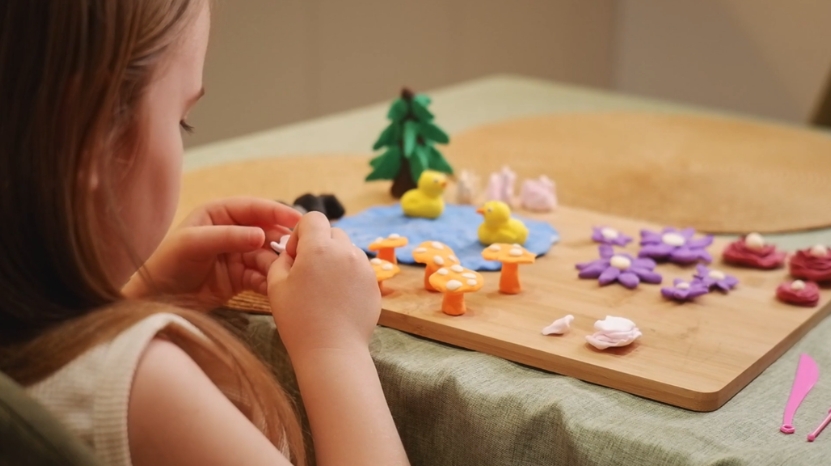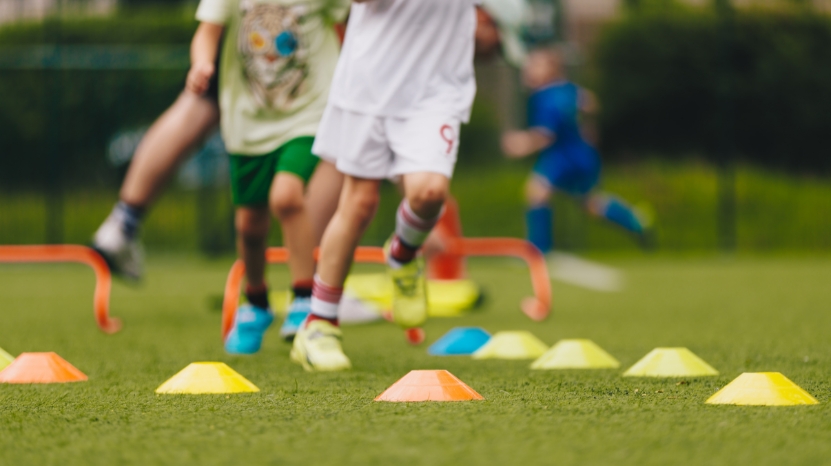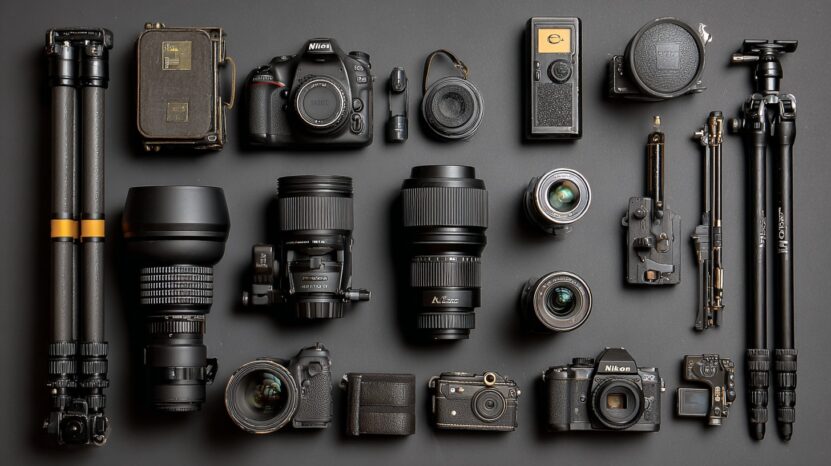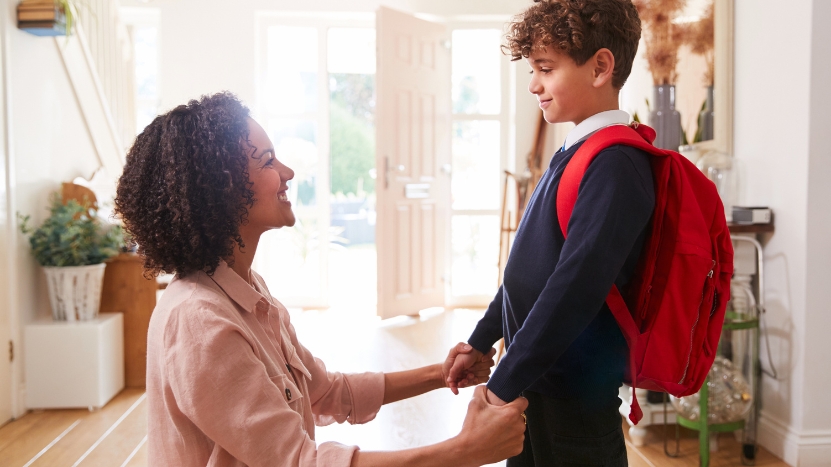
Share Post:
Mornings with children can feel like a sprint with hurdles, but small, evidence-based habits give you back control. When you combine a realistic schedule, a little prep the night before, and a head-to-toe checklist, the difference is remarkable.
In this guide, we’ll talk about what experienced parents actually do when the clock is ticking. Let’s get started.
Table of Contents
ToggleThe Night-Before Basics That Make Mornings Easier
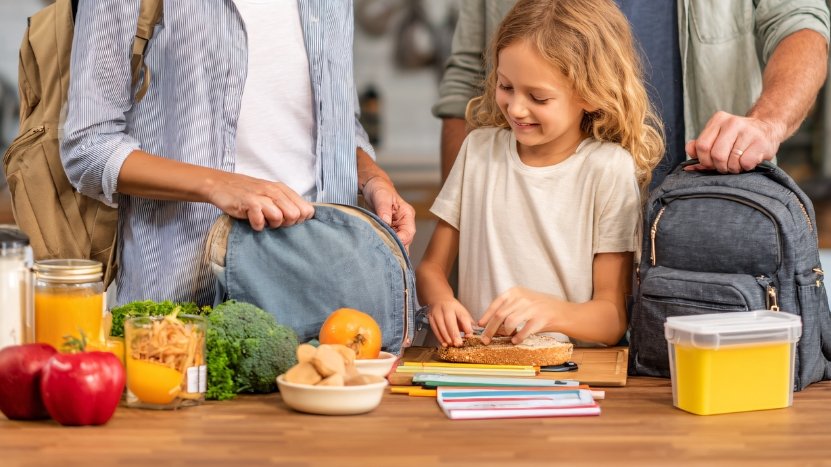
A few small steps before bedtime can cut morning stress in half and help your child start school feeling calm, organized, and ready to go.
Prioritizing Sleep for Mood, Memory, and Focus
Well-rested children handle transitions more smoothly. According to the American Academy of Pediatrics, school-age kids (6–12) need 9–12 hours of sleep, while teens need 8–10.
Working backwards from wake-up time is a simple way to set bedtime.
Packing Lunches and Backpacks Ahead of Time
A full lunch bag and backpack staged at night cuts decision fatigue in half. Adding small, fun touches like customized key chains to the zipper can also help your child recognize their bag instantly. Keep perishables at or below 4°C by using an insulated bag with two cold sources.
Frozen water bottles or ice packs do the trick. Sports gear, permission slips, and signed forms go in now, not at 7:45 a.m.
Laying Out Weather-Smart Clothes
Staging clothes in advance gives children a sense of autonomy. Include layers, hats, and sun protection based on the forecast. Make it a small evening ritual and you’ll save at least ten minutes each morning.
Morning Health Check

A quick scan before breakfast helps you decide if school is appropriate. The CDC advises keeping a child home for fever, repeated vomiting, significant diarrhea, or draining skin sores that cannot be covered.
If they’re fever-free for 24 hours without medication and symptoms are improving, attendance is generally fine.
For children with chronic conditions such as asthma or severe allergies, ensure the school has medications and action plans on file. Communicating with the nurse or health office early prevents emergencies later.
Face, Teeth, and Hair
Getting your child’s face, teeth, and hair ready sets the tone for the whole day. A quick but consistent routine here keeps them healthy, confident, and ready to focus once they step into the classroom.
Brushing and Flossing
The American Dental Association recommends two minutes of brushing, twice a day, with a pea-size amount of fluoride toothpaste for children old enough to spit. Floss once daily. Supervise until about age six to ensure good technique.
Time-saver: play a favorite two-minute song or use a kitchen timer so nobody rushes the job.
Handwashing That Actually Works
Teach wet-lather-scrub-rinse-dry for at least 20 seconds. Make it routine before breakfast, after bathroom time, and right before heading out the door.
When soap and water are unavailable, supervise the use of sanitizer with at least 60 percent alcohol.
Hair Care and Lice Prevention
Morning combing helps you catch tangles, style hair, and notice scratching early. Encourage children to avoid hair-to-hair contact at school and to keep hats, brushes, and headphones to themselves.
If lice show up, CDC guidance allows treatment after school, and “no-nit” bans are discouraged.
Skin and Sun Protection
Bright mornings often mean extra time outdoors, and a few quick steps can help protect your child’s skin from harmful rays.
Building sun safety into the morning routine keeps them comfortable, healthy, and ready for recess or sports without slowing you down.
Daily Sunscreen for Active Kids
Dermatologists recommend broad-spectrum, water-resistant SPF 30 or higher applied 15 minutes before sun exposure.
Reapply as the label instructs if there’s outdoor PE or recess. Pair sunscreen with a wide-brim hat and UV-blocking sunglasses.
Clothing as the First Line of Defense
Tightly woven fabrics or UPF-rated clothing add another layer of protection. A brimmed hat shields ears and the back of the neck – spots often forgotten during quick sunscreen applications.
Breakfast, Hydration, and Packed Lunches
Morning meals and drinks set the pace for the entire school day. A balanced breakfast, steady hydration, and a well-packed lunch help children stay focused, energized, and ready to learn from the first bell to the last.
Why Breakfast Still Matters
Research from the CDC shows students in school breakfast programs have better attendance and test performance and consume more fruit, whole grains, and dairy than nonparticipants. Skipping breakfast correlates with lower diet quality and poorer mental health outcomes.
Ideas for a quick, balanced start:
- Oatmeal with milk and berries
- Whole-grain toast with egg
- Greek yogurt with banana and a sprinkle of nuts
Hydration for Long School Days
Send a refillable water bottle. Many schools now allow bottles in class and have hydration stations for refills. Encourage extra sips on hot days or before sports practice.
Safe Lunch Packing in Three Moves
- Use an insulated bag
- Add two cold sources
- Keep it closed until lunchtime
This simple sequence keeps food at or below 4°C, lowering the risk of foodborne illness.
Clothing, Layers, and Footwear
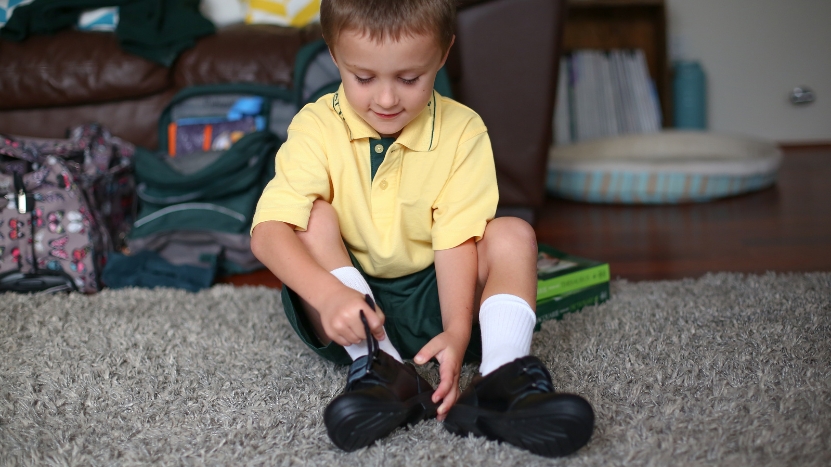
Getting dressed can set the tone for the whole day. A few smart choices with clothing, layers, and footwear make kids comfortable, weather-ready, and able to move with ease from the first bell to the last.
Dressing for Movement and Weather
Children focus better when they’re comfortable. Closed-toe shoes that can handle recess and PE are non-negotiable. For sunny days, lightweight long sleeves or UPF pieces help.
Here’s a quick reference table to make mornings simpler:
Forecast
Add-on
Why it helps
Sunny, high UV
Brimmed hat, SPF 30+, UPF shirt
Protects face, neck, ears, and reduces UV exposure
Hot
Water bottle, light colors
Supports hydration and thermoregulation
Rain
Packable jacket, dry socks in bag
Comfort and blister prevention
Cold
Layered tops, hat, gloves
Easier to regulate warmth between the bus, the classroom, and recess
Backpack, Papers, and Devices
A well-packed bag can make the whole day run smoothly. By setting up papers, supplies, and any devices the night before, you cut down on stress and keep your child focused on learning instead of scrambling to find missing items.
Keeping the Load Light and Safe
A backpack should weigh no more than about 15 percent of body weight. Use both straps, tighten so it sits high on the back, and add chest or waist straps if available. If a child leans forward noticeably, it’s too heavy.
Medications, Health Plans, and Paperwork
- Asthma: keep an action plan and quick-relief inhaler accessible.
- Allergies: ensure epinephrine is on site and staff know how to use it.
- Vision: follow screening schedules and book an eye exam if your child struggles to see the board.
A small health pack can include tissues, lip balm, and the nurse’s card with contacts and known conditions.
The Five-Minute Finish
A visible checklist near the exit lets kids take ownership. For example:
- Brush, wash, sunscreen, hat in bag
- Breakfast eaten and water bottle filled
- Folder and homework inside the backpack
- Medications where they belong
- Shoes on, jacket ready, quick bathroom stop
Consistent attendance matters. Chronic absence surged in recent years and correlates with lower achievement even in early grades. A predictable morning routine cuts down on last-minute chaos and missed days.
Safety on the Way
While encouragement initiatives are important, what is truly needed is more safe routes for children to walk and bike.
Let’s focus less on what kids wear and instead focus more on where they can safely ride. https://t.co/msjiNBhWPH
— Active School Travel Canada (@ActiveSchoolTC) May 31, 2021
Getting to school safely starts before the bell rings. A quick refresher on walking routes, bike gear, and bus habits helps children travel with confidence and gives parents peace of mind.
Walking Safety
Practice the route together a few times. Emphasize sidewalks, crossing at marked crosswalks, and looking left-right-left before stepping off the curb. Keep eyes up, not on devices.
Bike Helmets That Actually Fit
NHTSA’s two-finger check helps:
- The helmet sits one to two finger widths above the eyebrows
- Straps form a V under each ear
- Only two fingers fit between the chin and the strap
Replace any helmet after a crash, even if it looks intact.
School Bus Behavior
Arrive early, wait at least three giant steps from the curb, and if something drops near the bus, tell the driver rather than picking it up. Drivers can’t always see a child near the bumper.
A Head-to-Toe Routine You Can Copy Tomorrow
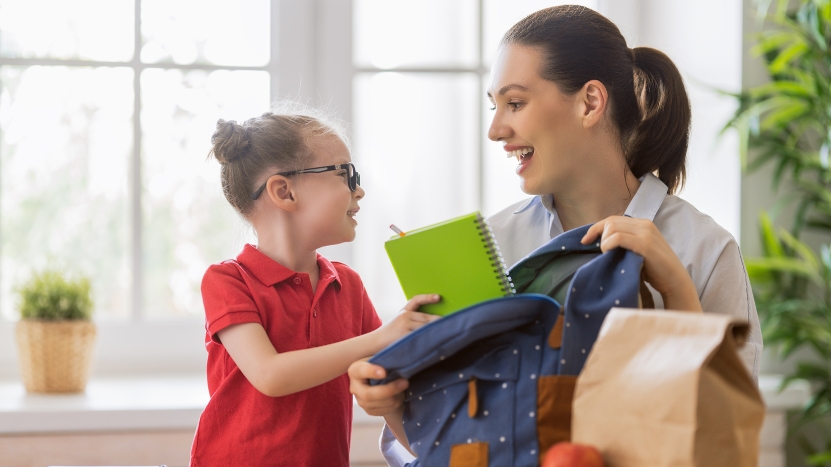
Start the day on autopilot with a clear sequence your child can follow without reminders. This head-to-toe routine pulls together the essentials so mornings run smoother and everyone gets out the door on time.
Head
Brush teeth two minutes with fluoride toothpaste. Comb hair, tie it back if long, and check for scratching. No sharing hats, brushes, or headphones.
Face and Hands
Wash for 20 seconds before breakfast and before leaving. Apply SPF 30+ 15 minutes before stepping outside if UV is moderate or higher. Pack the hat.
Torso
Dress in weather-appropriate layers, with a UPF shirt if sunny. Fit the backpack snugly, under 15 percent of body weight.
Stomach
Serve a quick breakfast meeting MyPlate groups. Fill the water bottle for school.
Pockets
Tissues, lip balm, and health plan card if needed. Medications are stored according to school policy.
Feet
Closed-toe shoes suitable for running, jumping, and walking. If biking, helmet fit check before rolling.
Resolving Common Morning Snags
Little hiccups can throw off even the best-planned school mornings. Here are some quick, practical fixes for the most common snags so you can keep things moving without added stress.
“We Run Out of Time for Breakfast”
Use the school breakfast program when available. Research links it with better attendance and test scores.
At home, pre-assemble overnight oats, boil eggs in batches, or stock yogurt and fruit for grab-and-go mornings.
“My Child Forgets the Water Bottle”
Park it in the backpack each night. Many schools allow bottles and provide fountains or hydration stations so kids can refill.
“The Backpack Is Constantly Too Heavy”
Weigh it weekly. Remove nonessentials, limit to one notebook per subject, and ask about digital submissions or classroom sets. The AAP notes the 15 percent rule and encourages watching posture as a signal.
“I’m Worried About Head Lice Spreading”
Teach kids to avoid head-to-head contact and not to share headwear. If lice are found, start treatment after school and return once treatment begins. No-nit bans are not recommended.
“We Argue About Sunscreen”
Place it next to the toothbrushes and treat it like a nonnegotiable. Dermatologists recommend SPF 30 or higher, broad-spectrum, water-resistant, with clothing and hats as extra layers.
Why the Routine Matters Beyond Today
@mjaldridge Spend Friday morning with us getting kids out the door for school! #morningroutine #momvlogs #ditl #fridaymorning #momsoftiktok ♬ original sound – Miranda Aldridge
Healthy mornings stack up to better school experiences. Participation in nutritious breakfasts links to improved attendance and performance, and strong attendance ties to long-term success. Families feel the difference, too.
When everyone knows the order of operations, there’s less friction and more time for a quick hug before the bell.
Printable Morning Checklist
Copy or print the following to keep near the door or on your phone:
- Brush teeth for two minutes, floss once
- Wash hands thoroughly
- Sunscreen on, hat packed
- Eat breakfast, fill water bottle
- Backpack under weight limit, both straps ready
- Medication and paperwork checked
- Shoes on, route safety check
One Last Thought
Morning routines aren’t about perfection but about predictability. Keep the order the same, post a checklist your child can own, and let trusted health guidance do the heavy lifting.
By Friday, you’ll notice calmer mornings and more on-time arrivals, which translates into healthier habits and happier school days.
Related Posts:





